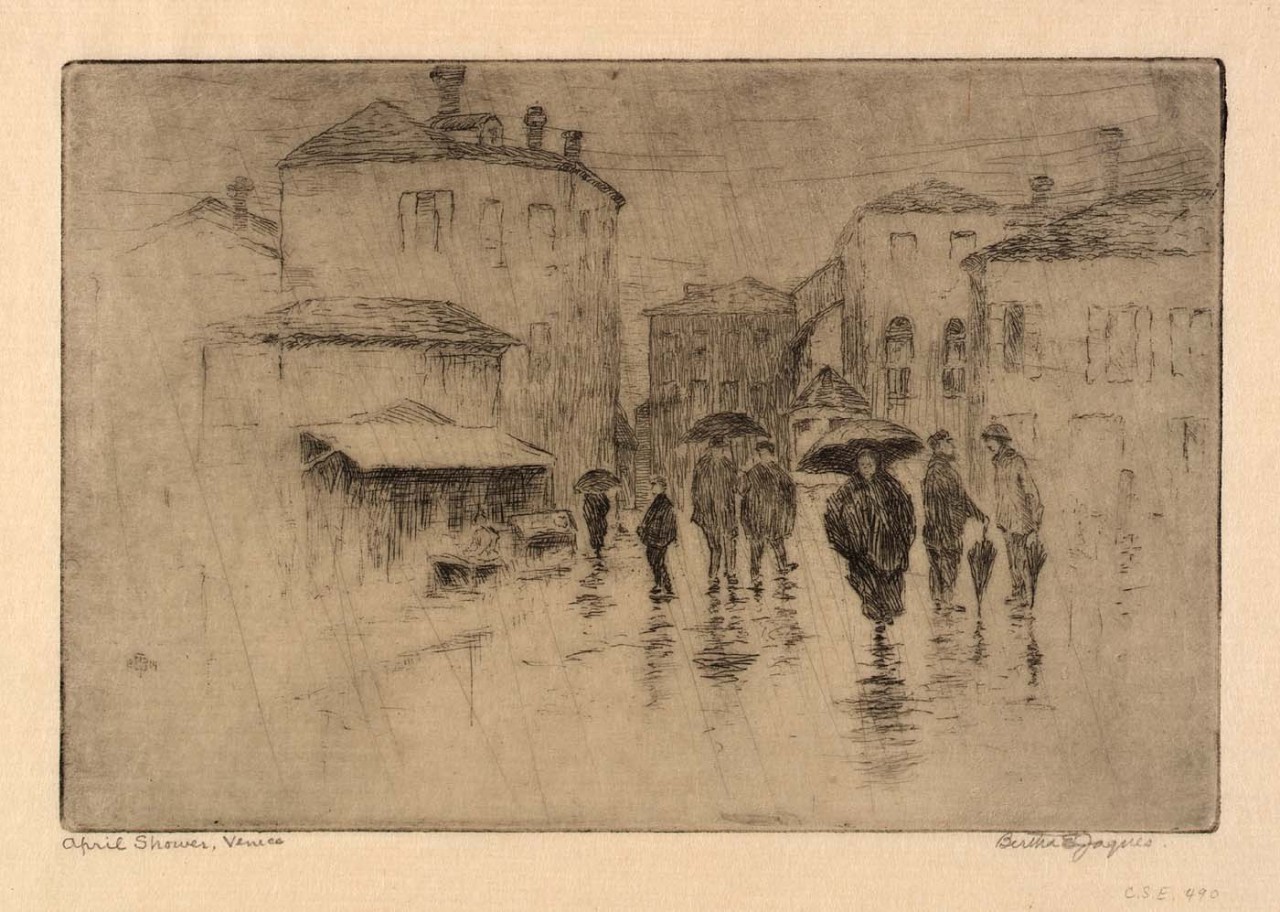Another new year has arrived, full of potential, aspirations, and of course, a whole new batch of Printmakers You Should Know! Last year I dedicated this feature exclusively to printmakers in the RMAC collection in order to highlight the diversity of our holdings. This year I'll be branching back out beyond our holdings, but I'll still periodically reference our artists, as there are plenty of other printmakers in our vault that you haven't met yet.
Today, however, we're going to the Midwest to meet the first printmaker of the new year: Bertha E. Jacques (1863-1941).
 |
Jacques in her studio, 1912. Image courtesy of http://en.wikipedia.org/wiki/Bertha_Jaques.
|
Bertha Jacques was originally from Ohio. She lived in Cedar Rapids during the 1880s, then moved with her husband to Chicago. In 1893, she attended the
World's Columbian Exhibition, and after seeing prints by such artists as Whistler, Tissot, and Zorn, she decided to take up etching for herself.
(As a side note, if I could travel back in time, one thing I would do is visit the Chicago World's Fair.)
Okay, back to our story...
As it turns out, Jacques was married to a surgeon, so he used his technical skills and expertise to fashion etching tools for her. By 1894 she had printed her first plate, and from that point on she was unstoppable. She did a lot of architectural scenes and landscapes, usually of hidden-away places.
 |
| Bertha E. Jacques, The Bridge, Japan, 1909, drypoint. Image courtesy of http://www.crma.org/Exhibition/Detail/Current/Bertha-Jaques-Eye-on-the-World.aspx |
 |
| Bertha E. Jacques, Thames Shipping, London, 1916, drypoint. Image courtesy of http://www.crma.org/Exhibition/Detail/Current/Bertha-Jaques-Eye-on-the-World.aspx. |
 |
Bertha E. Jacques, April Shower, Venice, 1914, etching. Image courtesy of http://americanartluce.tumblr.com/post/83831833283/bertha-e-jaques-april-shower-venice-1914.
What I especially love, however, are her florals. They have clean, elegant lines that reflect the Arts and Crafts aesthetic of the late 19th and early 20th centuries, while her interest in negative space suggests the ongoing influence of Japonisme. Additionally, these floral etchings are very often hand-colored, lending them additional delicacy. As I mentioned in one of last month's posts, it was the colored etchings of Bertha E. Jacques that inspired my most recent holiday card.
|
 |
Bertha E. Jacques, Bittersweet, 1920, hand-colored etching. Image courtesy of http://en.wikipedia.org/wiki/Bertha_Jaques.
|
 |
Bertha E. Jacques, Gentians, 1929, hand-colored drypoint. Image courtesy of http://www.crma.org/Event/Detail/740/Exhibition-Closes-Bertha-Jaques-Botanical-Prints-and-Photographs.aspx
|
 |
| Bertha E. Jacques, Hollyhocks, ca. 1933 hand-colored drypoint. Image courtesy of http://www.crma.org/Exhibition/Detail/Current/Bertha-Jaques-Botanical-Prints-and-Photographs.aspx |
In addition to making her own prints, Jacques was very much involved in promoting etching as an artistic medium. In 1910, she became one of the founding members of the
Chicago Society of Etchers, and she served as the group's secretary for over twenty five years. Incidentally enough,
B.J.O. Nordfelt was also a members of the Society; several of his prints in our collection were initially presented to Jacques as
gifts.
In addition to her activity as an etcher, Jacques also experimented with
cyanotype, and made numerous
photograms of flowers.
 |
| Bertha E. Jacques, Joe-Pye Weed: Trumpet Weed, ca. 1910, cyanotype. Image courtesy of http://www.leegallery.com/naturalist-photography/naturalist-photography-exhibition-2 |
 |
| Bertha E. Jacques, Wild Lettuce, ca. 1900, cyanotype. Image courtesy of http://art.famsf.org/bertha-e-jaques. |
Overall, she was a very productive artist and advocate for etching, creating over 400 of them. Not bad for someone who had her husband fashion her first tools out of surgical instruments.
Want to learn more? Here are some sites to get you started:
http://www.crma.org/content/collection/Bertha-Jaques.aspx
http://americanart.si.edu/collections/search/artist/?id=2441
http://allinsongallery.com/jaques/index.html
And if you'd rather read a book, here's a source for you:
Joby Patterson, Bertha E. Jacques and the Chicago Society of Etchers (Fairleigh Dickinson University Press, 2002).





Comments
Post a Comment
Questions? Comments? Speak your mind here.